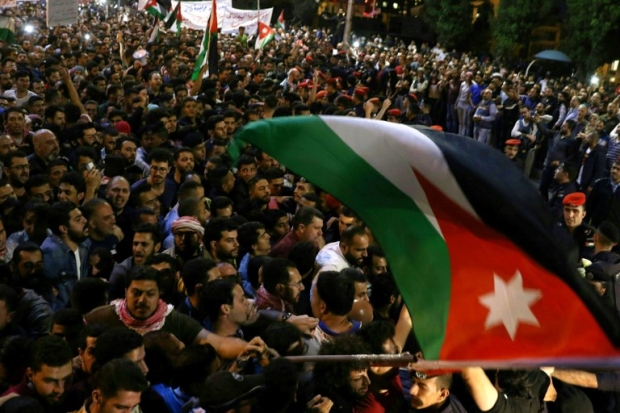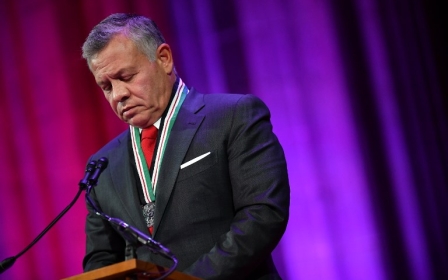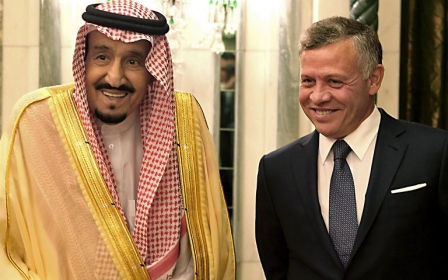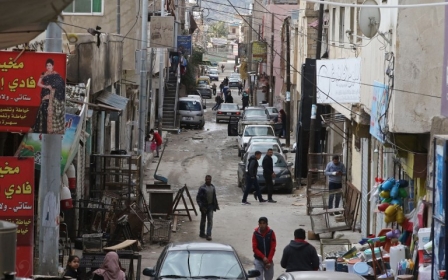Do Jordan protests herald a new phase of the Arab Spring in 2019?

It has been a tough year for Jordan. Marked by an unprecedented wave of street protests over harsh economic conditions, 2018 saw the return of scenes from the Arab Spring wave that hit the region back in 2011.
In December, protests turned violent, after weeks without any clashes between demonstrators and security forces.
The country's economic crisis has worsened in recent days, heightening tensions in the streets. Jordanian security services used force last month to disperse protesters who tried to reach the prime minister's office in Amman, but the demonstrators have vowed to continue protesting in an effort to push the government to revoke a controversial income-tax law.
Protesters are also calling on the government to cancel the country's cybercrime law, which imposes harsh penalties on social media activists, and for the release of detainees who took part in previous protests.
No fix in sight
If the protests in Jordan escalate in the new year, bringing down Prime Minister Omar al-Razzaz's government or producing more violence, it could pave the way for a new wave of change in the region - possibly even a second phase of the Arab Spring, which began in Tunisia in 2010 and ended in Syria, where the revolution has largely failed.
Although Jordan's King Abdullah II intervened last summer in response to protesters' demands, the recent deterioration marks a serious shift in this wave of social unrest for several reasons.
In light of the ongoing protests, the government is at genuine risk of being sacked
Firstly, the protests are taking place at a higher pace and with greater levels of violence, despite amendments to the income-tax law. This means that the protesters have not accepted the government's concessions.
The income-tax law is among the conditions imposed by the International Monetary Fund to continue supporting Jordan, whose financial crisis is likely to continue, with no fix in sight beyond collecting greater amounts of taxes from Jordanian citizens.
Secondly, the December protests came just two days after a meeting between the prime minister and a number of activists. But the meeting was boycotted by some protest leaders and failed to alleviate the ongoing tensions, as evidenced by the recent flare-up.
Dozens of detainees
In addition, the cybercrime law has failed to contain online dissent, which has spilt over onto the streets. The arrest of activists has not contained the protests, with activist Fakher Daas telling Middle East Eye that "there are dozens of detainees. The number of protesters under police custody is significant." The Jordanian government, meanwhile, said it was not holding any political prisoners, noting: "All the protesters under custody are charged with violating the law."
Although the new income-tax law will bring 180 million Jordanian dinars ($253m) into state coffers, there are no indications that the country's political and economic crisis is nearing a resolution.
The reasons behind the financial crisis are numerous, but the most important factor is that financial aid from Gulf countries has been cut off for almost two years now. A five-year aid package from the Gulf Cooperation Council (GCC) states to Jordan, worth some $3.6bn, ended in January 2017, but no further assistance was offered.
To understand the importance of the Gulf’s financial aid to Jordan, consider that the general budget of Jordan is estimated at nine billion Jordanian dinars ($12.5bn).
Social and political demands
Jordan's political calamity is escalating due to an accelerating economic crisis. The income-tax law that has sparked protests among the poor and middle classes will generate only a quarter of a billion dollars for the treasury of the Jordanian state, just a fraction of the cancelled funds from the Gulf states.
In light of the ongoing protests, the government is at genuine risk of being sacked. In addition, the current wave of unrest in Jordan may tempt the broader Arab public to again rise up with social and political demands, which could lead to a second phase of the Arab Spring in 2019.
- Mohammad Ayesh is an Arab journalist currently based in London.
The views expressed in this article belong to the author and do not necessarily reflect the editorial policy of Middle East Eye.
Photo: Protesters gather in Amman on 5 June (AFP).
This article is available in French on Middle East Eye French edition.
New MEE newsletter: Jerusalem Dispatch
Sign up to get the latest insights and analysis on Israel-Palestine, alongside Turkey Unpacked and other MEE newsletters
Middle East Eye delivers independent and unrivalled coverage and analysis of the Middle East, North Africa and beyond. To learn more about republishing this content and the associated fees, please fill out this form. More about MEE can be found here.






